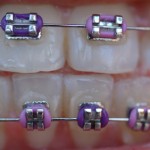
The application of orthodontic forces to teeth has been reported to induce changes in the periodontal ligament, dental pulp and supporting bone. The aim of this review was to assess the effect of orthodontic forces on the dental pulp.
Methods
Searches were conducted in the Medline, Embase, Cochrane Central Register of Controlled Trials (CENTRAL), Scopus, Web of Knowledge, CINHAL and Google-Scholar databases. Clinical studies that assessed the application of orthodontic force on teeth and assessment of pulp tissues were considered. Two reviewers independently selected the studies, with three reviewers assessing study quality according to a grading system developed by the Swedish Council on Technology Assessment in Health Care.
Results
- 30 studies were included
- 6 studies (involving 75 patients) assessed the effect of orthodontic forces on pulpal blood flow (PBF).
- 20 studies investigated the pulpal cellular responses to orthodontic forces.
- 4 studies investigated pulpal responses to orthodontic forces on traumatized teeth.
- Most studies were graded at moderate to low grade.
- A narrative summary of the included studies was presented.
Conclusions
The authors concluded
There is insufficient scientific evidence to prove that orthodontic forces jeopardize the human dental pulp in terms of reducing PBF and irreversible alterations in pulpal cellular response. However, a history of dental trauma maybe considered a risk factor for loss of pulp vitality during orthodontic treatment.
Commentary
Despite a wide search stretching back to 1954 the authors have only identified a small number of small studies that address this topic. Two of the studies included looking at pulpal cellular responses were conducted in vitro and a further 5 of the studies included for this outcome did not included the number of patients recruited which may raise questions as to why they were included. A previous systematic review was published by von Böhl et al in 2012 which is noted by the authors in their discussion. They identified a similar number of studies and concluded:-
Because of a lack of high-quality studies there is no conclusive scientific evidence for a relation between force level and dental pulp tissue reaction in humans. There is contradictory scientific support for a force-dependent reduction of blood flow.
Links
Javed F, Al-Kheraif AA, Romanos EB, Romanos GE. Influence of orthodontic forces on human dental pulp: A systematic review. Arch Oral Biol. 2014 Nov 24;60(2):347-356. doi: 10.1016/j.archoralbio.2014.11.011. [Epub ahead of print] Review. PubMed PMID: 25463910.
von Böhl M, Ren Y, Fudalej PS, Kuijpers-Jagtman AM. Pulpal reactions to orthodontic force application in humans: a systematic review. J Endod. 2012 Nov;38(11):1463-9. doi: 10.1016/j.joen.2012.07.001. Epub 2012 Sep 11. Review. PubMed PMID: 23063219.

Don’t miss – Orthodontic forces: insufficient evidence of their effect on the dental pulp http://t.co/QdG73lrc7D